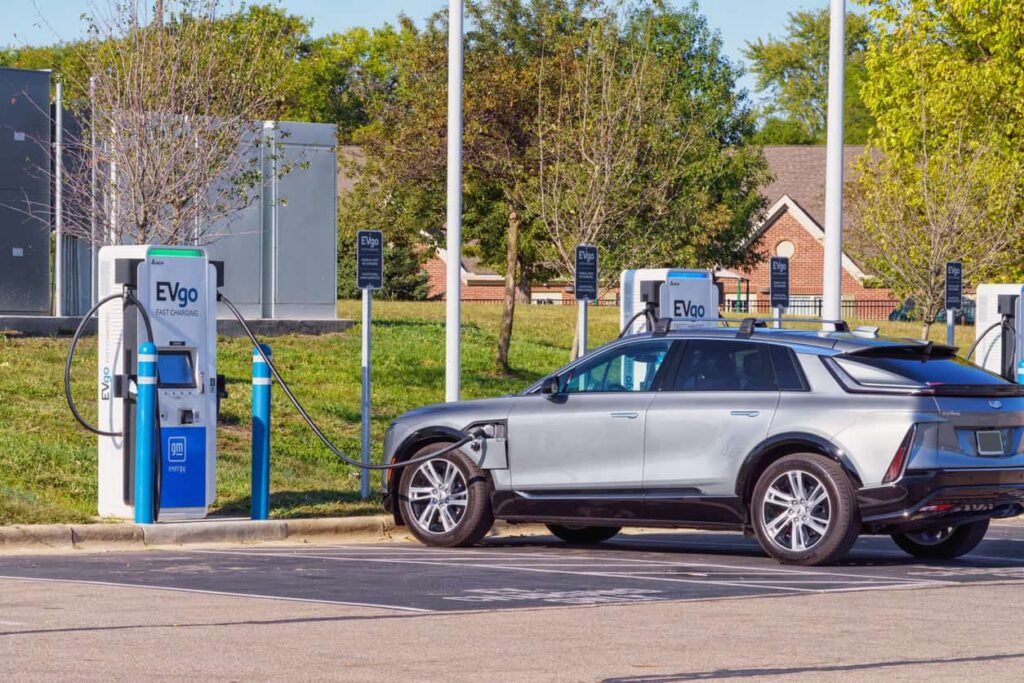May 2, 2025 | Car Accidents
According to data from Edmunds, electric vehicles (EVs) now make up nearly 8% of new car sales in the United States and almost 10% of all cars on the road. Tesla, notably, retains over 40% of this market (down from over 80% less than a decade ago), but other car makers—including Ford (7%), Chevrolet (5.5%), Volkswagen (4.2%), and Hyundai (3.8%)—are entering the mix and driving competition.

While EVs offer some significant advantages over gas-powered vehicles as far as energy efficiency and emissions, there are trade-offs to these benefits, and the latter make crashing into an EV uniquely risky (if not deadly).
Here, our attorneys at the Oklahoma City/Edmond-based McGuire Law Firm are well-versed in auto-injury claims of all sorts and stand ready, willing, and able to provide a comprehensive overview of the dangers of getting into a collision with an EV:
- EV BATTERIES POSE A UNIQUE RISK OF FIRE AND EXPLOSION.
One of the most serious—and potentially injurious—risks of an automotive collision with an EV is the risk of a battery-related fire or explosion. For years, news media across the U.S. have reported deaths and injuries relating to EV-involved-accident fires and explosions, like this report by ABC7 Chicago detailing the deaths of two individuals after a Tesla struck a home, exploding into flames, or this report by the L.A. Times detailing the death of a Tesla driver due to “challenges associated with the vehicle’s lithium-ion batteries.” Many EVs—not just Tesla models—are powered by large lithium-ion batteries, the fire-risks of which are well-documented. These batteries are known to pose a risk of ignition and/or explosion when damaged in a collision.
Alarmingly, lithium-ion battery fires burn hotter and longer than gasoline fires, and their unique chemical composition requires specific response strategies. These batteries can even reignite hours or days after the crash, thus posing a long-term risk and necessitating special monitoring and/or emergency response. If you are in a crash involving an EV in Oklahoma, there is a real risk that the vehicle could go up in flames quickly. Be aware of this risk, identify the danger if the time comes, and get yourself to safety.
- The risk of electrocution is real.
Though uncommon, a crash involving an EV may expose any occupants of the EV, bystanders, or first responders to a risk of electrocution. To meet the demands of today’s consumer, EVs utilize high-voltage systems—often in excess of 400 or even 800 volts—to fully operate. As such, where any components included in this system are damaged, ruptured, or where wiring is even exposed, the risk of electric shock is significant.
As many folks may already know, water—whether from rain or emergency fire suppression efforts—can increase the risk of electrocution, at least in some circumstances. Even trained responders have to take extra precautions when dealing with and responding to EV-involved car accidents, and awareness of the risk of electrocution is one aspect of any such response.
- MORE WEIGHT = MORE FORCE
Did you know that EVs are actually quite a bit heavier than comparable gasoline-powered vehicles? Indeed they are, as the average electric vehicle battery alone may weigh 1,000 pounds or more, and U.S. officials have previously warned that this reality highlights a unique risk posed to the occupants of lighter, gas-powered vehicles. This risk is real, and as basic physics tells us, more weight means more force (all other things constant).
The heaviest non-commercial vehicle on the road, the Hummer EV SUV, weighs in at over 9,000 pounds—way more than your average gas-powered vehicle. And illustrating the larger trend in the vehicle market, the Mustang Mach E Electric SUV and Volvo XC40 EV are roughly 33% heavier than their gas-powered counterparts (see also, the Hyundai Kona). This kind of extra weight on the road does not just pose an increased risk to infrastructure (e.g., from additional wear and tear), it poses an increased risk to your person and property in the event of a collision. Be aware of this risk.
- YOU WON’T HEAR THEM COMING.
One often-overlooked risk posed by EVs—especially to pedestrians, as this study published in the Journal of Epidemiology and Community Health highlights—is their lack of auditory cues and reduced noise output. Both before and after a collision with an EV, they are unlikely to produce the same level of noise as a gas-powered vehicle.
This means, prior to any collision, less warning to other soon-to-be-involved vehicles or bystanders—and after a collision, at least uncertainty as to whether the vehicle suffers from damage posing, e.g., the risks of fire, explosion, or electrocution. Again, be aware of this issue; don’t be fooled by silence surrounding an EV vehicle, especially after an accident.
Contact Our Oklahoma City Car Accident Lawyer Today
At McGuire Law Firm, our attorneys fight hard for justice. We take on all types of cases, including claims arising from EV wrecks.
If you or your loved one was involved in a collision with an EV, we are here as a resource you can count on. CONTACT US now for a free case review.